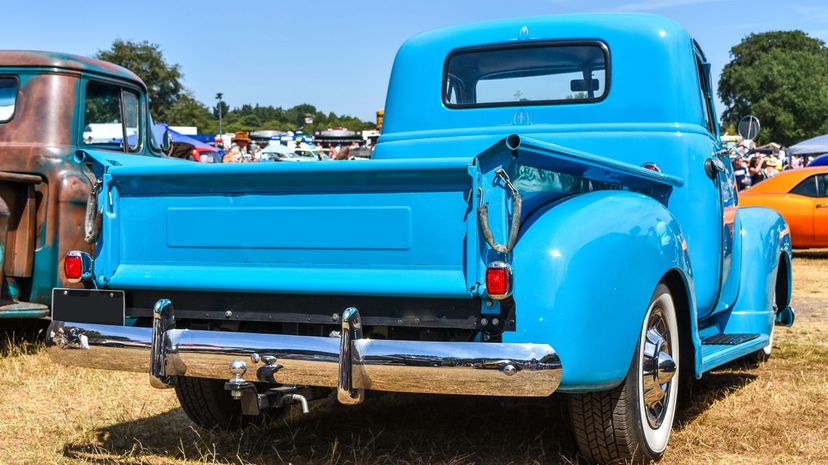
About This Quiz
There's a good reason that country music artists sing about their pickup trucks so much; it's because pickups are cool. If you think back to before they were over modified and useless to do real truck things, a pickup truck said something about a person. If your truck had a bed full of grain and hay, you were a hard-working farmer. If someone was to peer into your pickup bed and see a pile of lumber and nails, you were a motivated carpenter. The iconic pickup truck has always held the reputation of being a workhorse, filling the role of practically another full-fledged employee at any company since the seemingly primitive days of the Model T.
As time went by, trucks had a couple of awkward phases that rendered them sort of un-truck like. These phases included slapping a truck bed on anything that would stand still long enough, and trying to morph an aerodynamic brick into a sports car. These quirky little truck eras almost make you love the truck body style even more. Okay, so you can't take the Subaru Brat seriously as a construction truck, but it did have a truck bed.
Not everyone is a truck person, but this quiz might turn you into one! There's a good chance you have only been exposed to stereotypical trucks with lift kits and impractical tires. Who knows; you might actually find a pickup truck that you can identify with and want to call your own. Go ahead, test your knowledge. You might find yourself scouring Bring A Trailer and listening to the song Like A Rock by Bob Seger before you finish!
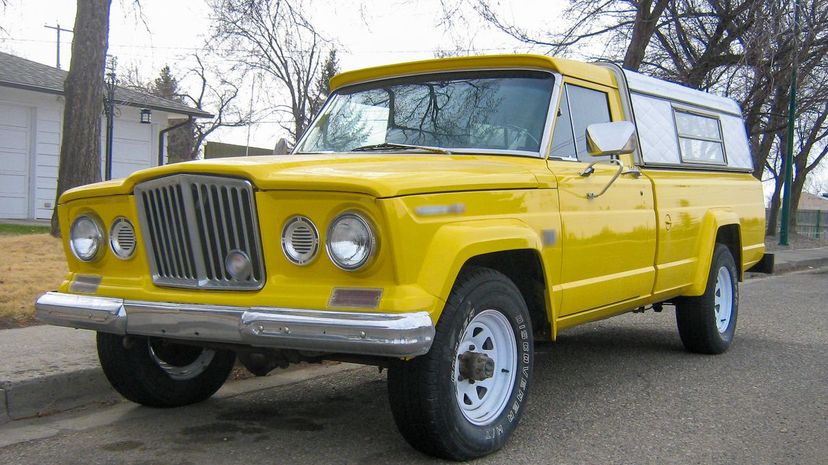
The Jeep Gladiator had a long production span between 1962 and 1988, with four different manufacturers calling it their own. Willys, Kaiser Jeep, American Motors and eventually the Chrysler Corporation had dibs on the popular utility truck. The first Gladiators were built on a Wagoneer chassis, which allowed the pickup not only to be able to haul but also gave it four-wheel drive. Recently, the Gladiator was reintroduced by Jeep and won the title of American Truck of the Year in 2020. Not too shabby after coming back from an over 30-year hiatus!
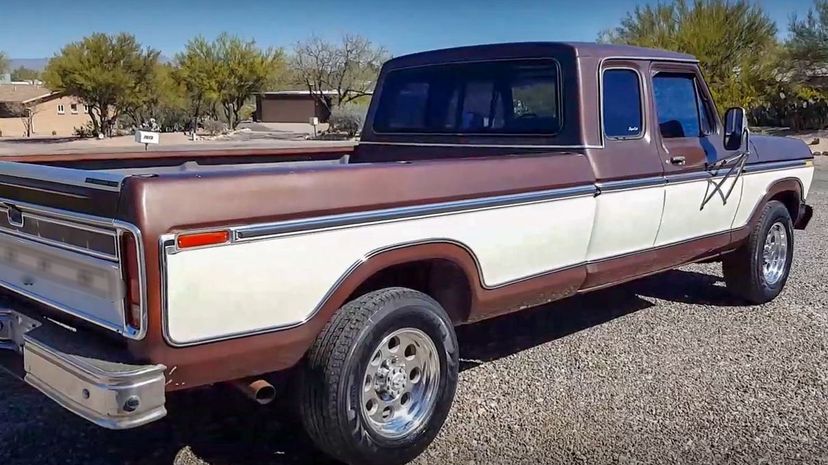
This truck isn't just any old truck; John Wayne had it built to be able to haul his dressing-room trailer from set to set while filming in the Southwest. Only 500 of the one-ton trucks were made that year, and they were all equipped with a grunting 460-cubic-inch V-8 that had no problem toting a dressing room full of gear. The Duke used this powerhouse on his ranch in Arizona and eventually sold it to one of his stuntmen. Ultimately, the truck found its way to a cowboy museum in Deadwood, South Dakota.

After the war, Chevy decided to completely redesign the trucks they were offering to the civilian market and created what they called the Advanced Design. This truck boasted very modern styling, including a non-cab-over configuration and an aerodynamic-looking cowl. The Advance Design trucks, much like today, were available in everything from half-ton to full-ton models. This truck is incredibly unique because it was the first pickup to offer an in-dash radio as an option.
Advertisement
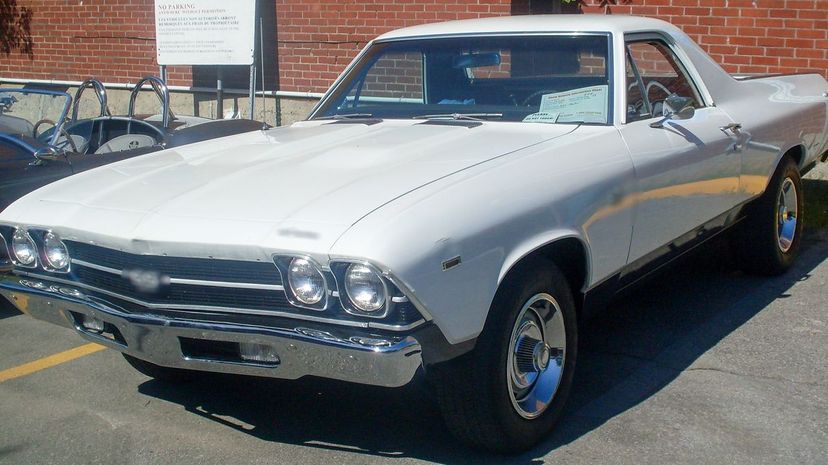
Car Craft magazine titled the 1970 El Camino SS as "the sexiest truck in existence," and can you disagree? The front clip gave an aggressive, very untruck-like demeanor, and the 454 crammed under the hood backed that attitude. Since the El Camino was built on a Chevelle platform, the little truck was a lot more muscle car at heart than it was truck. This agile truck could easily smoke tires while hauling firewood and look hot doing it!

If you were cruising to Panda Express in your Little Red Express, chances are you'd break at least a few laws on the way. This 1978 Dodge was purpose-built to burn rubber and rule drag strips. This truck was, in fact, the fastest American made vehicle in 1978, putting the emission-laden sports cars to shame. Just over 2,000 of these incredibly fast trucks were available, and the survivors are currently selling for around $24,000.

When Dodge decided that trucks needed seating for more than two, the club cab became a reality. By adding a little extra to the cab, the rear area converted into a storage area or seating for two incredibly small people. This only opened the flood gates for other variations of cab styles, and eventually, four-door trucks were introduced. Next time you see any pickup that looks like it could seat six people comfortably, remember that cab styles humble beginnings with the D100 club cab!
Advertisement
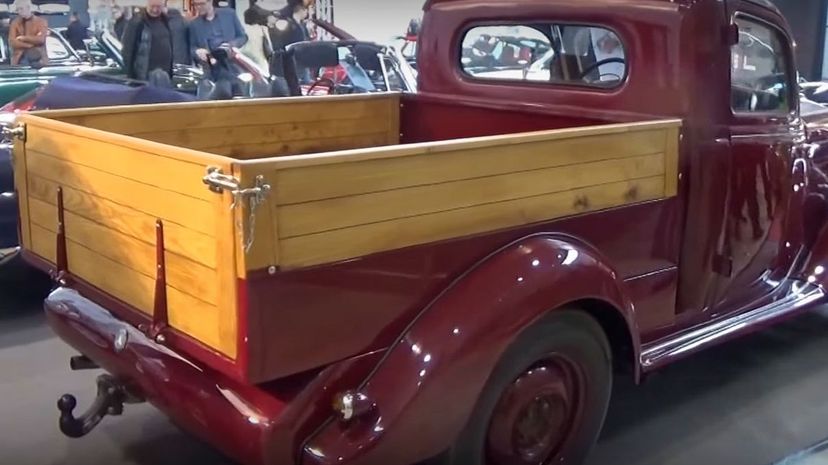
Much like Chevy had to rebuild their brand after World War II, Mercedes had to crawl back from the war in a big way. Their introduction of the 170 was their equivalent to the Advance Design Chevy. Mercedes went in a very different direction with their pickup. They equipped it with a diesel four-cylinder engine, which provided disappointing horsepower. Gasoline engines were also available but not as desired due to their lack of efficiency. The price tag wasn't very appealing to most after the war, either, and the truck was heralded as being a pickup truck for business people, not the farmers it was intended for.

You might read the word wagon and thing of things like a little red wagon or a station wagon, but the Dodge Power Wagon far from being a wagon. Initially, the Power Wagon was built for military use and wasn't available for civilians, but in '56, the rule book changed. These light-duty trucks had the rugged capabilities of an Army truck but with comforts that the typical driver could enjoy. These trucks were commonly used as fire trucks and delivery trucks.
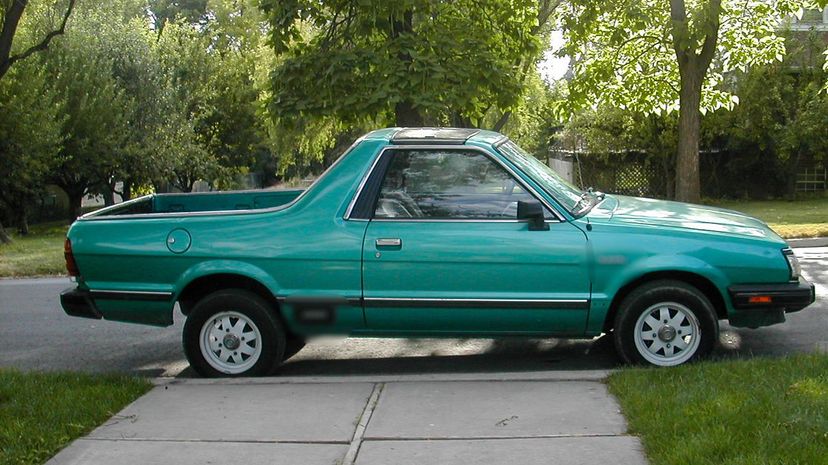
Who needs another brat in their lives? Aren't misbehaving children at the grocery store enough? Although the name might have turned some people off, the Subaru Brat was really a neat little hauler. The name had nothing to do with the tiny truck's demeanor! It was actually an acronym for Bi-Drive Recreational All-terrain Transporter. Now you can see why they just called it the Brat! Unique features of the Brat included jump seats in the bed, a spare tire mounted under the hood and optional T-tops.
Advertisement

If this little tike of a truck has left you scratching your head in curiosity, it's okay! These Datsun pickups were only introduced to the United States as a test run in 1959. This was in no way a broad-spectrum test, and only 10 total trucks were brought over to be tested. One of them recently was listed on Bring A Trailer and boasted an odometer reading of only 6,100 miles. That's less than 100 miles a year!
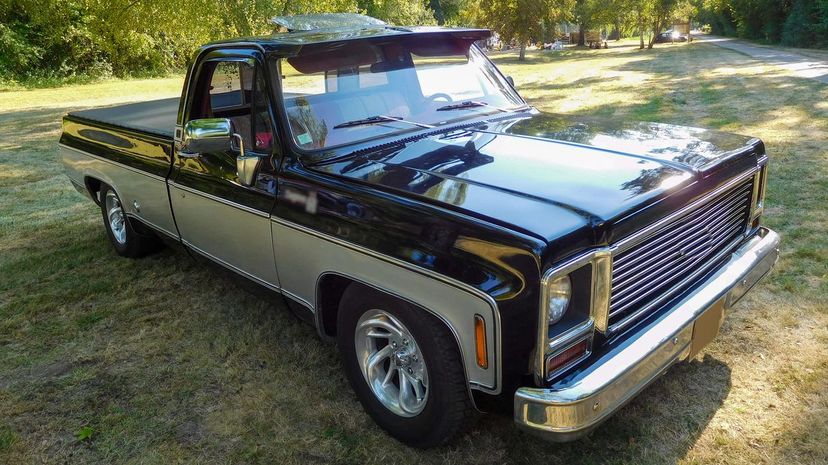
This particular truck, a '71 Chevy Cheyenne, was quite the truck at the time. This trim level was far superior to the base models. It had added luxury features like a cargo lamp, extra sound deadener and a headliner. If you were really high faluting, you could opt for the Cheyenne Super trim level, which featured a chrome tailgate handle and wood-grain trim for the interior.

When the oil embargo hit, trucks were some of the hardest hit by new rules and regulations from the EPA. Instead of giving in to the decreased demand for trucks, Toyota decided to get creative with their offerings. The optional four-wheel-drive utilized technology used in the Land Cruiser and turned the otherwise forgettable Toyota into a practical pickup. This addition made the Toyota pickup a desirable platform for camper conversions and off-road racing modifications.
Advertisement
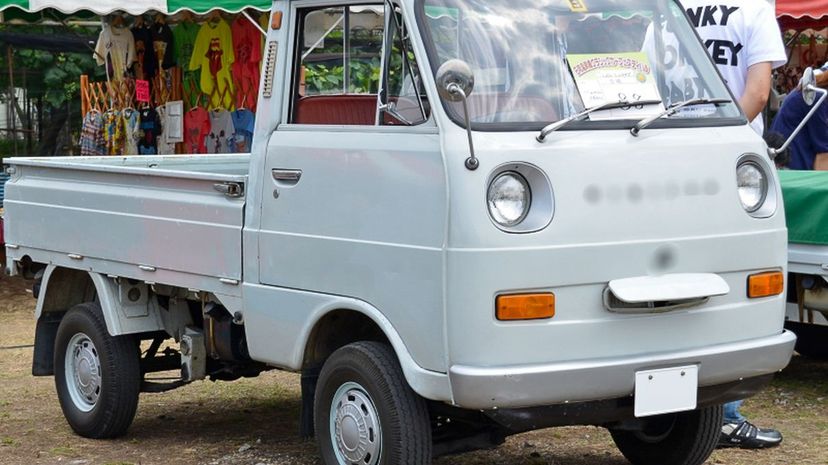
Believe it or not, this wasn't the only tiny truck Mitsubishi was cranking out during the late 1960s! The Mitsubishi Minicab featured in the picture, as well at the Mistubishi 360 Trucklet, were tight turning, big-city-friendly utility vehicles. Under the hood, they were anything but truck-like! The Minicab was fitted with an air-cooled 359 cc engine, which is not much more than a dirt bike engine! Mitsubishi continued making the Minicab up until 2014 and then transferred the rights to Suzuki, who still makes them to this day.
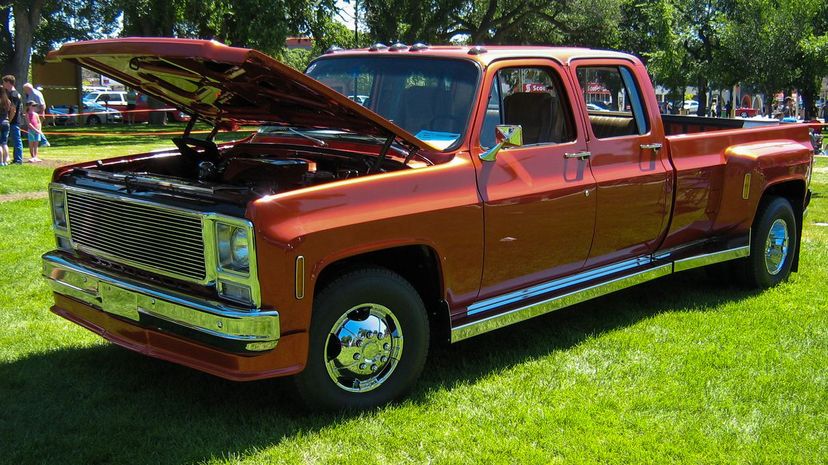
Heavy-duty trucks had the option of dual-rear wheels for decades before being available on non-professional models. The addition to an extra set of rubbers on the rear axle aids in the distribution of weight over more surface area. This made trucks with the dual rear wheel option perfect for towing and in-bed camper conversions. In 1980, Ford jumped on the dually bandwagon, and then Dodge followed a few years later. The dually in the photo features the newly introduced crew cab that could seat six comfortably.
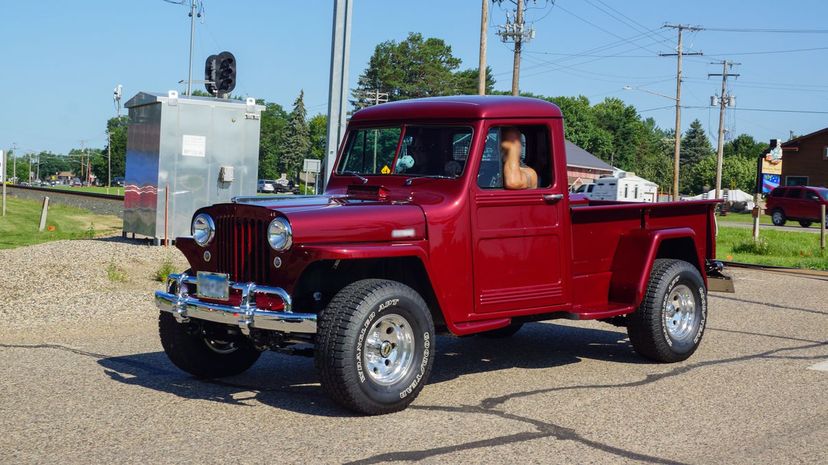
Willys-Overland Motors had been in the business of building all-terrain vehicles for military use and people carriers before they decided to adventure into the truck market. They took what they knew and formed an incredibly utilitarian truck. It looked like it could withstand a mortar blast but also look right at home at the local feed-and-seed. To amp up the rad-factor of the Willys, the engine was the same straight four-cylinder used in the military Jeeps of WWII and was branded with the catchy name "Go-Devil."
Advertisement
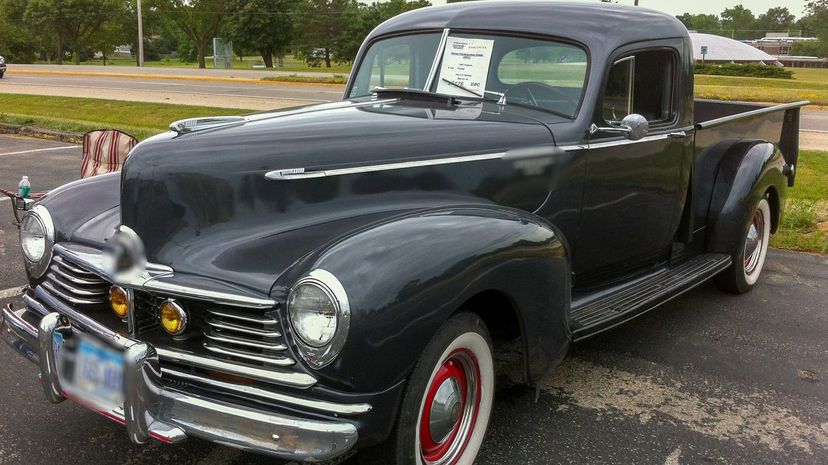
Hudson had built a reputation for producing some of the most stylish and luxury cars available to the American market in the early part of the century. Naturally, when they introduced a truck in '37, it was unlike any other pickup truck on the market. Based on the sleek design of a sedan, the Big Boy offered brut-like strength in a sexy body. In comparison, the Big Boy was about the size of a modern pickup, which was huge for the time. If the styling seems a little, unlike any other, it could be because it was the very first mass-produced vehicle to have design influences from a female.
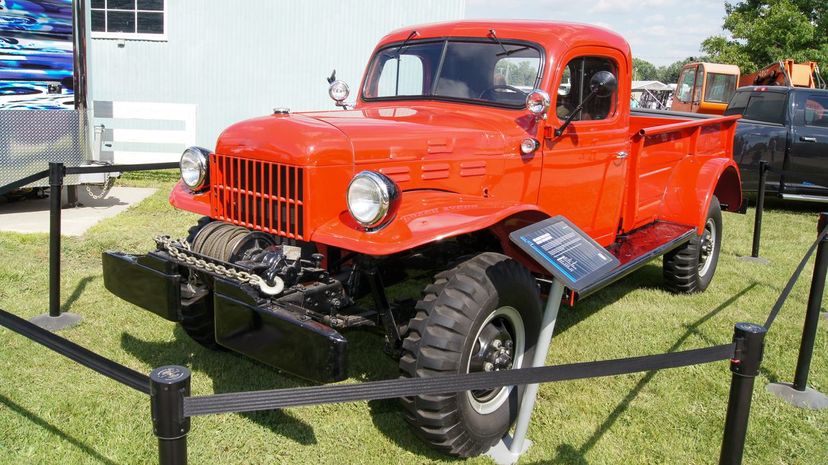
Dodge had been building military vehicles and gained the respect of those that had served and experienced their dependability. There wasn't anything extraordinary styling wise, the fenders were flat and the grill was boring. What did make it desirable, however, was the rugged nature of its build. Dodge converted what was referred to as a "military carry-all" into a civilian friendly work-horse at an affordable price.
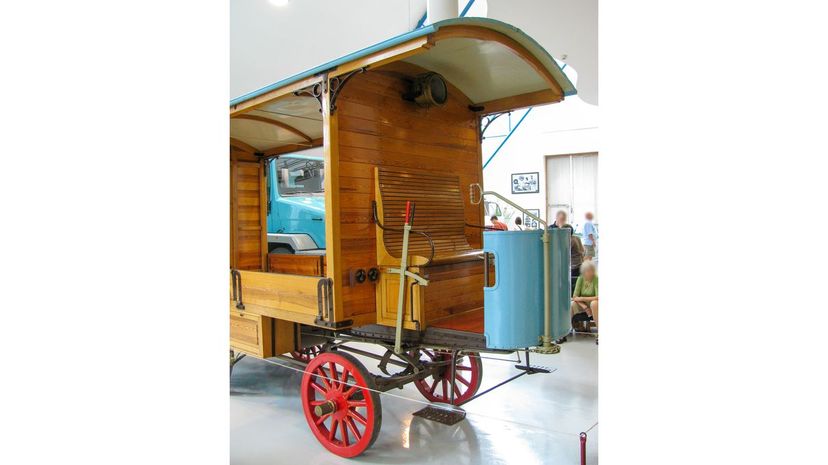
This Czech-made truck may not resemble the bloated pickups we're familiar with today, but it certainly helped pave the way. This truck featured typical truck components, like a bed, but took it to the next level: a removable loading dock, a roof for the bed and extra seating in the bed as well. Sadly, the first First Truck didn't survive but had been tediously recreated right down to the dual two-cylinder engines that powered it.
Advertisement
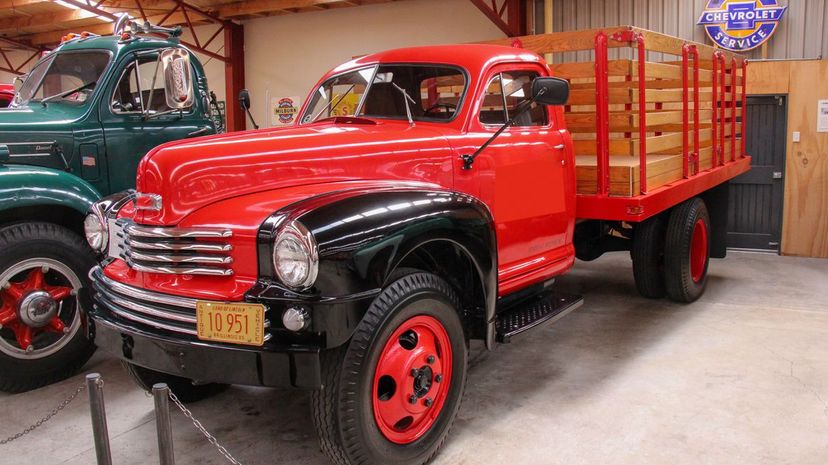
The weird name was no match for its absolutely stunning styling and had many design elements that were carried on to modern trucks. Most of these Haul-Thrift trucks were explicitly built for export, but a few made their way Nash dealerships around the states. The pickup itself was never actually sold to the public, which makes finding a used version pretty rare.

Studebaker itself is an intriguing company, and few people realize they were in production for 114 years. The company got its humble beginnings by constructing wagons for farm use. They were also an integral part of the '49ers during the Gold Rush by producing the wheelbarrows and other tools needed to strike it rich. Over their course of business, they manufactured trucks for 35 of those years and had the first production car to reach 170 miles per hour.
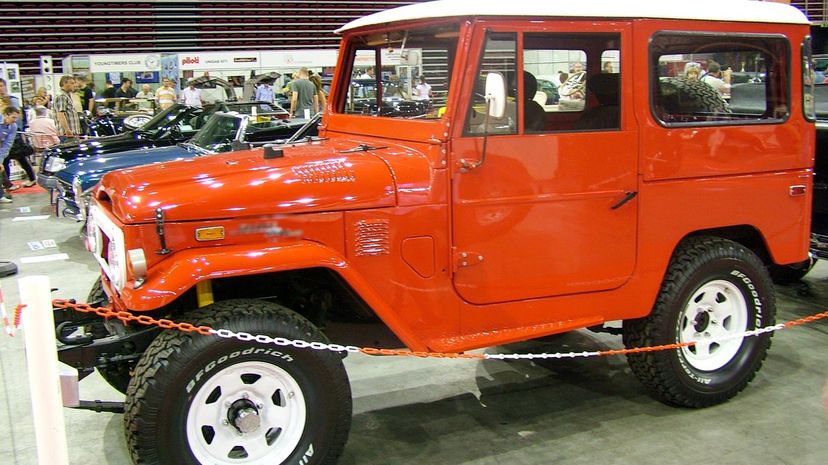
The first thought that comes to mind for many when they hear "Land Cruiser" is either a bloated current SUV or an agile all-terrain vehicle from the '70s. The Land Cruiser truck was both rolled into one awkward package. Very few survived their work-horse designation, but the ones that have are being sold for a pretty penny. In modern times, SUVs are now built on truck chassis as opposed to the other way around.
Advertisement
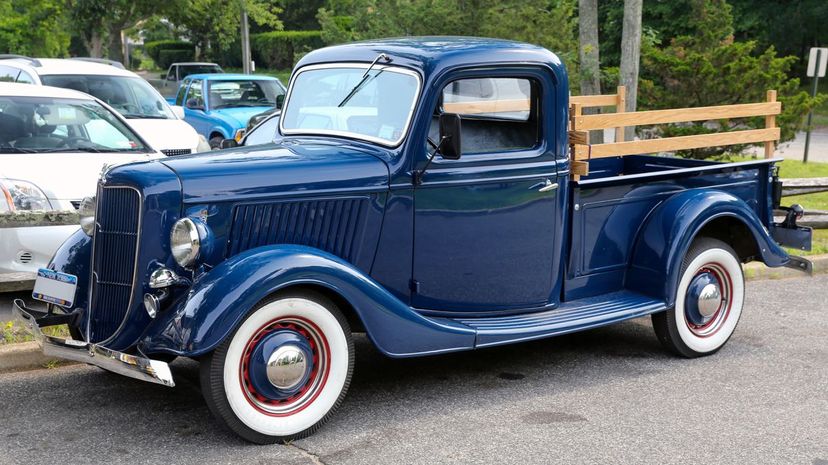
Ford was stretching it's design ideas with new models and configurations after discontinuing the Model A in 1931. The curvaceous hood lines and bulbous headlights made this Ford truck unlike from any other introduction, ever! The factory-installed V-8 engine could deliver a maximum horsepower of 85, which is pretty puny compared to the horsepower figures of today. The unique lines and ease of modification make the '35 and newer Model 67s incredibly desirable for hot rodders and collectors alike.
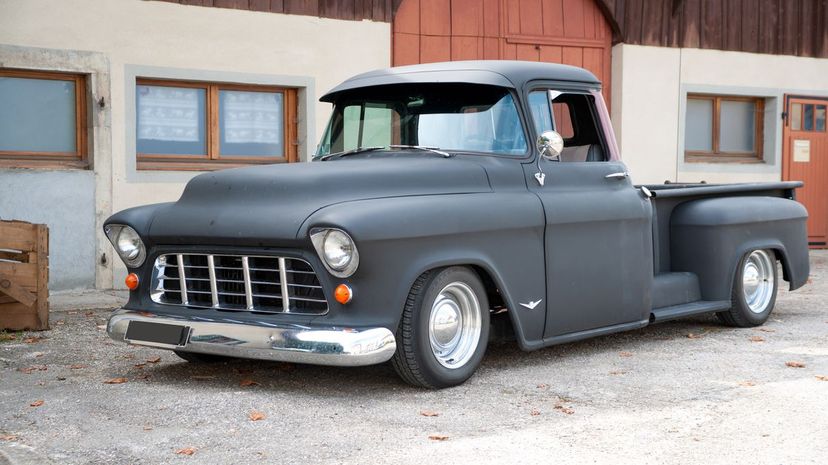
The Advance Design Chevy truck was such a big hit, it was a hard sell for Chevy to mess around with a perfectly good pickup. Stylistic changes included an aerodynamic hidden footstep in the door well and a full wrap-around windshield and rear window. The Task Force was also the first Chevy to be fitted with the now infamous small-block V-8.
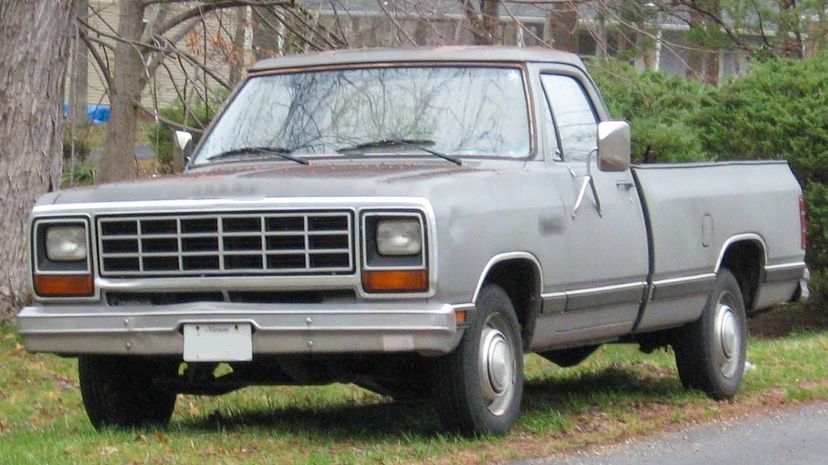
Of course, Dodge had been making trucks since '21, but it was a full 60 years after the first truck was produced that it was titled the Ram. Previous iterations of Dodge trucks had been titled with the generic coding system of D and W classifications, which indicated if they were two or four-wheel drive. At the time, Chevy did the same thing with their C/K classifications for trucks. The Ram truck was embellished with a hood ornament reminiscent of the same ornament found on Dodges of the early years.
Advertisement
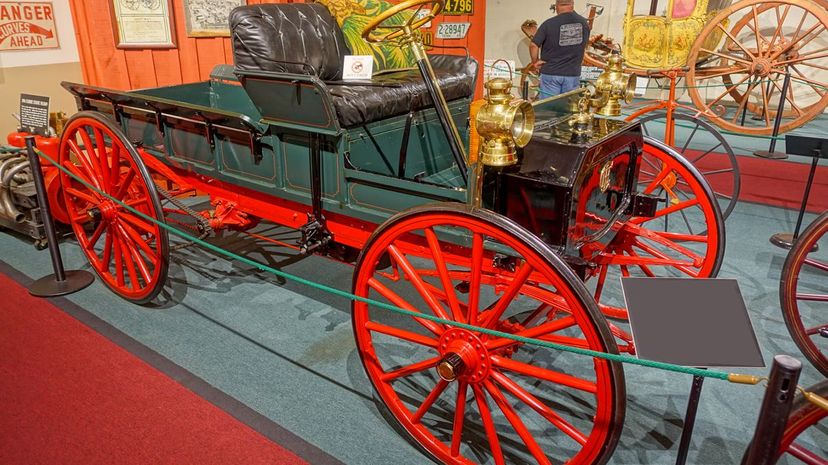
When you think of the words auto and wagon, they don't typically add up to be a pickup truck! Imagine back in the days of early automobiles, the catchiness of the name wasn't as important as what the vehicle can do for you. The International Harvester Auto Wagon was built by a company that had one motive in mind: to provide hard-working machines for even harder-working people. This stylistically challenged vehicle wasn't built to impress the people at the local saloon, it was purpose-built to haul produce as efficiently and quickly as possible.
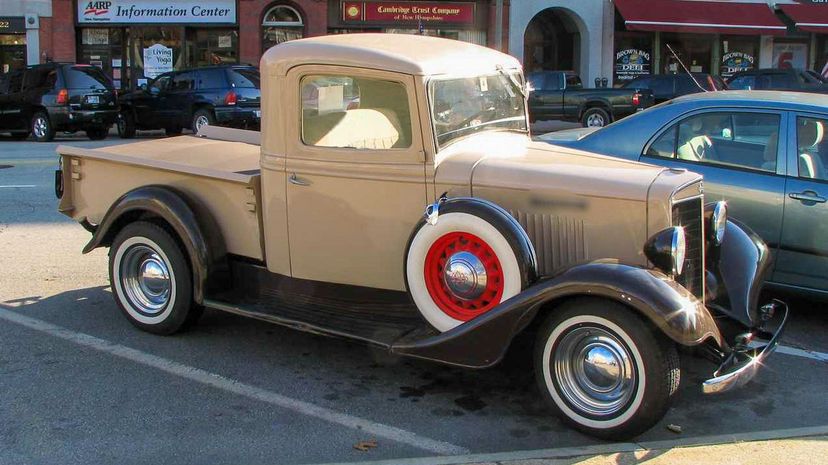
The 1930s weren't very nice to businesses, and automotive companies struggled to pull themselves back to their former glory after the depression. International Harvester decided to go in a drastically different direction with its machinery to try and gain more market ground. They decided to produce a lighter-duty truck for a broader spectrum of the market, as opposed to the big machines that were at one time their bread and butter. The C-1 light-duty truck had unique styling cues, like sweeping fender curves and a pronounced running board. This truck was a pivotal introduction to the International lineup. It was the life preserver they needed to survive the backside of the Great Depression.
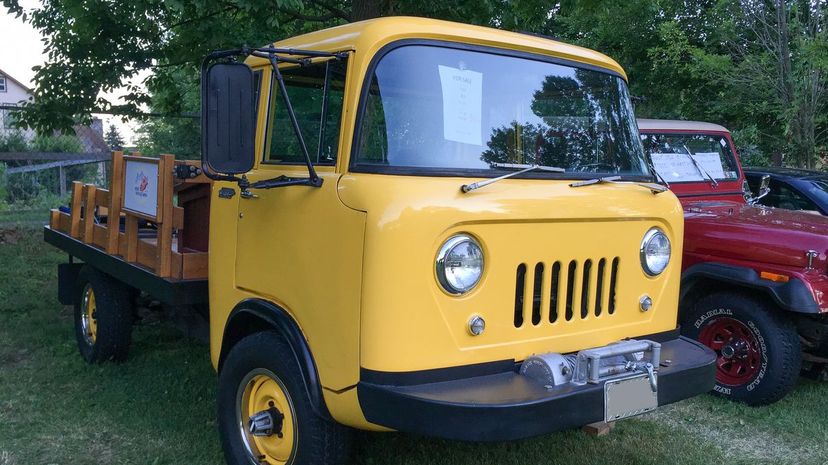
This sturdy truck was built by Willys but was branded with the Jeep nameplate. The truck itself was purpose-built for the likes of military and government use, and a handful made their way into the civilian sector. Models, such as the FC-150 (FC stood for Forward Control in regards to the cab-over design), featured some pretty impressive statistics. At the time, it had the longest bed available on the truck and could climb grades of up to 60%. Our modern interstates limit hill grades to 7%. Can you imagine a 60% grade!
Advertisement
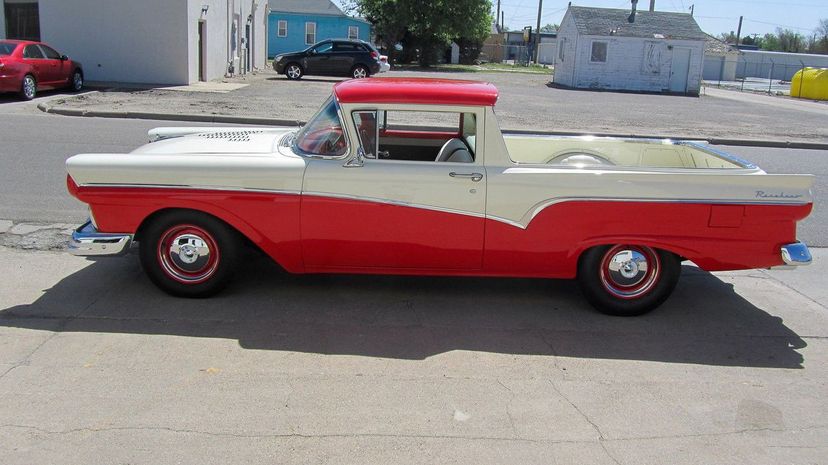
The very first Ranchero was an exceptional truck, albeit tiny! Ford took the styling cues from some of its best selling full-sized cars and plugged it into a truck-body. Most '50s model trucks looked like they'd be entirely at home hauling compost for their entire life, but the Ranchero looked more at home on the downtown strip. Ford borrowed the friendly face of the '57 Chevy sedan and plugged in some pronounced tail fins on the bed of the truck. An interesting quirk of the year one Ranchero was the hinged front hood, which, if it were in a front-end collision, would send it flying through the windshield.
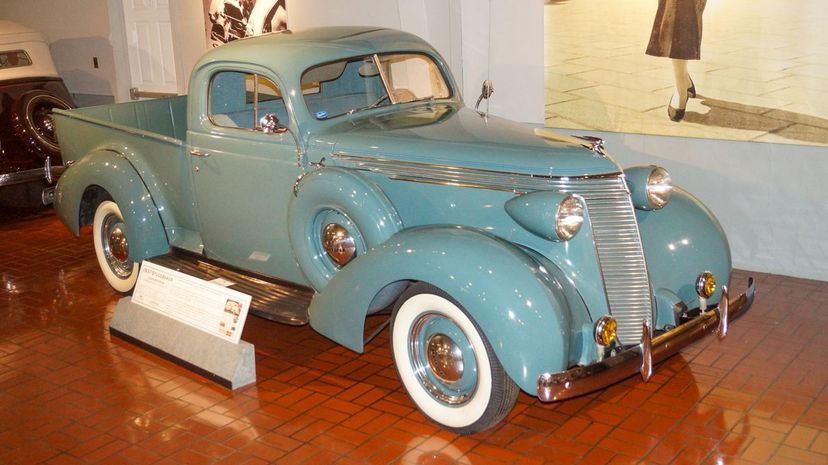
Studebaker cars were known for their classy appearance, with chrome and curves galore! Their addition to the truck market did not disappoint in the design or performance department either! The truck itself was very innovative and incorporated many features that current pickups lack, like pop-up strap ties in the bed and adjustable tailgate for extra hauling room. Other amenities in the cab included a cigar lighter and a clock, both of which were a big deal to have in the '30s!
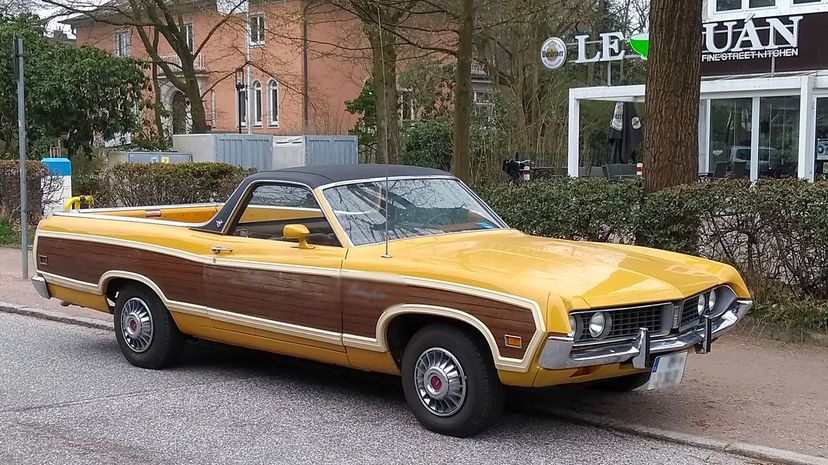
It's hard not to feel bad for the poorly executed parts-bin-special that the Ranchero had become toward its final days. The truck went through several manifestations of personality throughout its almost 20-year run, including a practical vehicle to a full-blown muscle car. In the '70s, the Ranchero had gotten placed on seemingly the back burner. It was pieced together with Thunderbird chassis and an LTD front clip. Aside from being ugly, the horsepower was laughable, maxing out at 134 for the base model. This was the last year for the mighty Ranchero, for now!
Advertisement

The 1970s weren't all about the oil embargo and fuel efficiency; there was a whole lot of fun being had as well. To compete with some of the cool van conversions, which weren't the best at off-roading, Chevy partnered with the conversion company, Chinook, to create the ultimate camping machine. Unlike other slide-in camper tops, the Blazer Chalet was a permanent addition to the stripped Blazer body. This heavy camper top paired with the thirsty V-8 engine gave the driver fuel mileage in the single digits, maybe 10 on the highway if they were lucky. If you've never seen one, there's a good reason! Less than 1,800 were built.
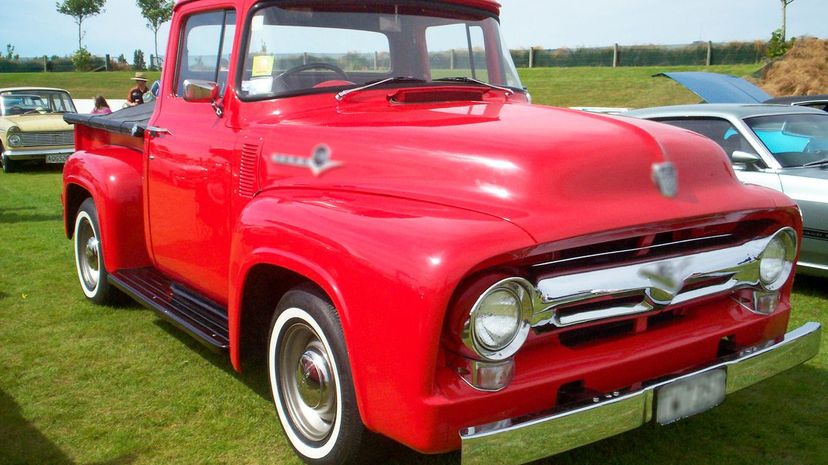
Ford had its finger on the pulse of American car culture and an even keener eye on the competition. When Dodge rolled out the Power Wagon, Ford was right there with the F-100 Half-Ton to compete. The F-100 had been produced since 1953 but was already entering its second generation with this drastic redesign. Stylistic changes were made to the windshield and rear window, much like were made to the Chevy Task Force of the same era, which featured curves galore.

Mazda has always been innovative when it comes down to their use of rotary engines and typically has massive success. The use of a Wankel rotary engine in this compact truck, however, was an absolute flop. On paper, the pickup looks like it had promise, complete with a four-barrel carburetor and an incredibly efficient 1.3-liter engine, but people weren't buying it. The ones that did ended up modifying them into race trucks, with one actually winning third place in a 24-hour rally race in 1976.
Advertisement
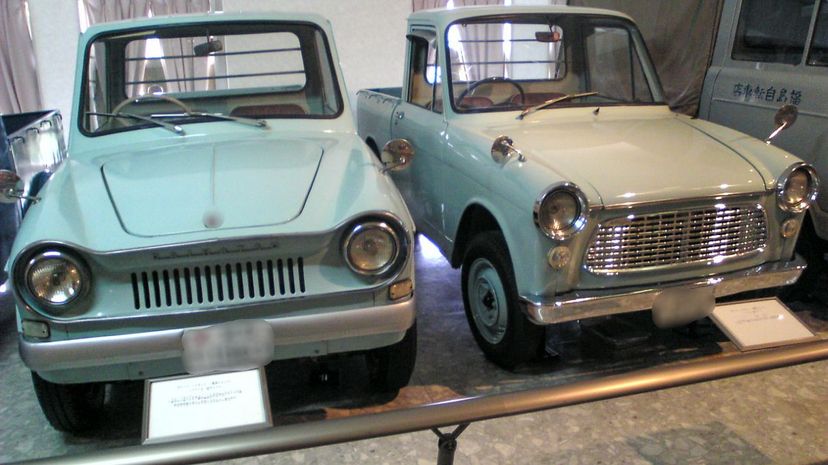
Imagine the smallest street-legal truck in 1961, viola; you've got the Hijet. This baby of a pickup was born with a pint-sized 360-cubic-inch engine but grew with age. The truck, although almost too small to take seriously, had the heart and components of the big boys in America. A front-engine configuration with a rear-wheel-drive made it surprisingly practical and useful. If you were cruising in one back in the day, however, you weren't planning on doing any interstate driving! The top speed of the '61 Hijet was only 47 miles per hour, with nothing loaded in the bed!
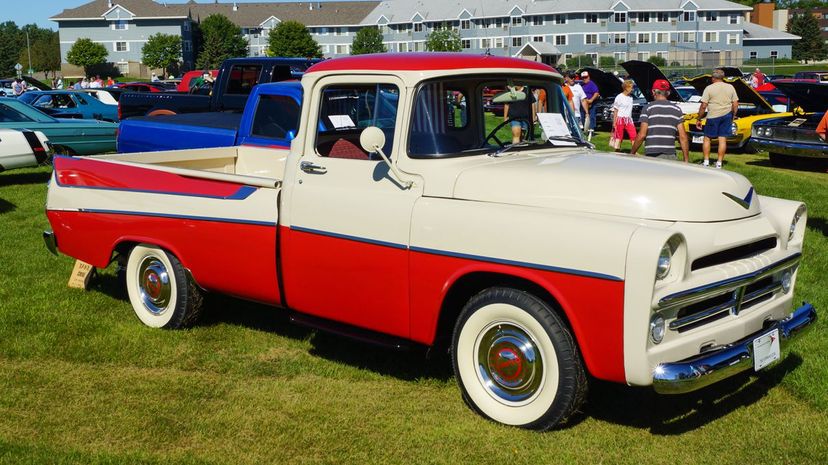
This might be the best-looking truck on the entire list, depending on who you ask. Much like the '57, Ford Ranchero was decked out with fins and chrome, the Sweptside was given a very '50s treatment as well. Instead of being a weird car-sized morph of a truck, the D100 was a real pickup, with genuine truck parts. This Dodge was innovative in a big way, including a primitive-looking push-button transmission that shifted for the belching V-8 under the hood. All secrets told, the Sweptside was actually a parts-bin special like the last Ranchero and borrowed parts from station wagons and trucks.
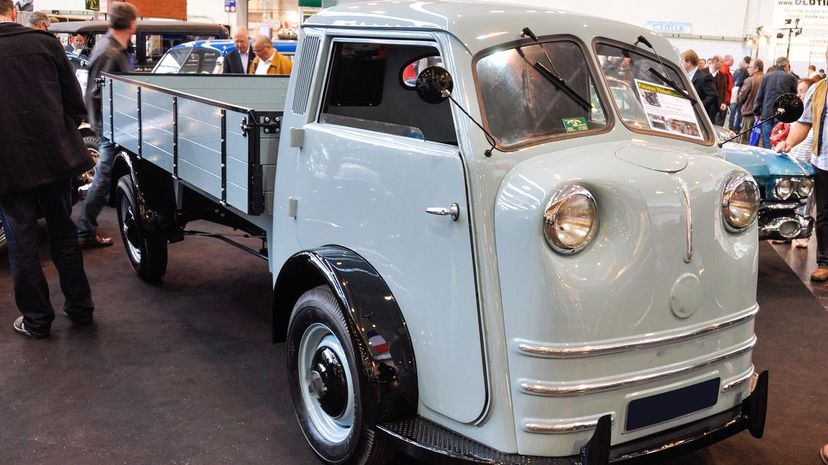
Tempo was a famous German vehicle manufacturer with roots all the way back in 1924. Their first stint at vehicles wasn't trucks, however, but odd-shaped motorcycles retrofitted with a flatbed for hauling. Eventually, they reconfigured the set up to accommodate a pickup and van body. Unfortunately for Tempo, this was the same time the Volkswagen was gaining wild popularity with their microbus, and they eventually became defunct in 1977.
Advertisement

Before 1955, trucks were made for very work-oriented tasks such as toting supplies and pulling trailers. Chevy spiced things up a bit with the introduction of what has become the world's first sport truck. They decided to do away with the wildly popular and overall good pickup that was the Advanced Design and shift into a fancier format. The Cameo was the answer! Complete with stylish body panels made of fiberglass and tiny tailfins, the Cameo didn't quite look like it was tough enough to do truck stuff. The Cameo didn't go over as well as Chevy had hoped, and they shifted back to tough trucks after three years of the Cameo.
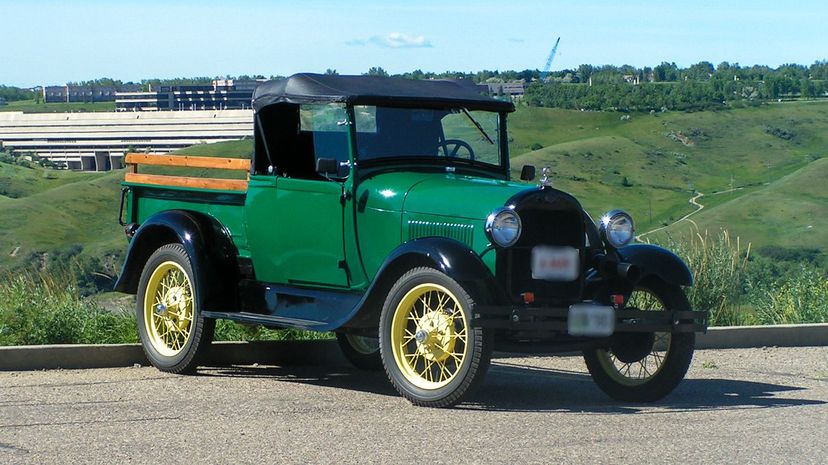
The Model A far outsold the Model T, and by the time this truck came out, almost 5 million Model A vehicles had been made. The truck version of the Model A featured a practical bed made of steel and a comfortable cabin with an improved roof as well. Previously, the roof of the trucks had been a wire mesh with leather. A brand-spanking-new Model A pickup cost $455 in 1931. In today's market, a slightly modified Model A would cost a buyer close to $38,000.
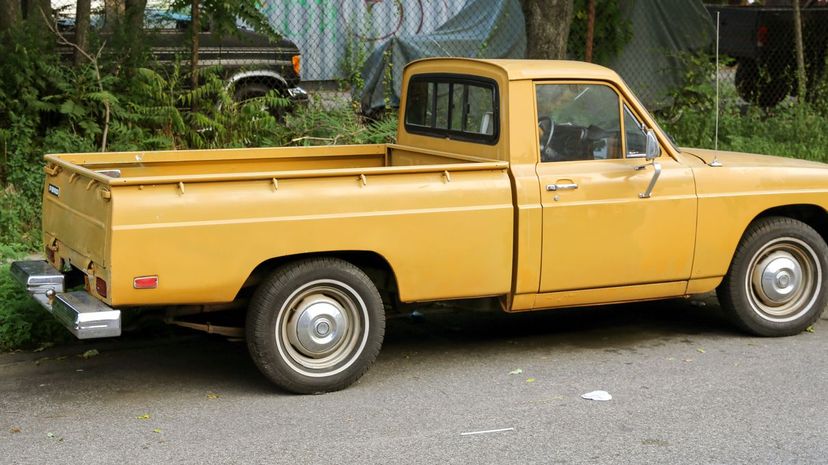
Ford and Mazda have a long history of working together symbiotically to create efficient, economical vehicles for the global market, and the Courier was one of them. Slight changes to the standard B-series Mazda truck were made to create a unique Ford truck, including using a front clip reminiscent of an F-100. This little truck was all but mighty, producing 74 horsepower while not under heavy load. For those that needed to haul bales of straw and other light, bulky items, this was the perfect truck. For those that needed to tote cinder blocks, it was useless.
Advertisement

Production of the Model TT began in 1917 to fulfill the need for a more substantial truck than the standard Model T. The solution to this was to plug heavier-duty components on the existing chassis. This created a vehicle that could perform under heavy load, but in turn, also created a sort of snail of a pickup. It was not advisable to drive faster than just over 15 miles per hour. The TT was eventually replaced by the AA, but not before a good ten-year production run.